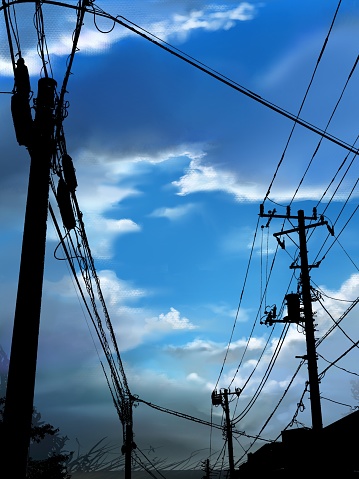
As summer temperatures soar, staying cool becomes not just a matter of comfort but of safety and well-being. However, for many everyday Americans, the cost of keeping the air conditioning running can be daunting. If you find yourself struggling to cover your utility bills during the hottest months, you’re not alone—and more importantly, there is help available. Utility assistance programs can provide the financial relief you need to beat the heat without breaking the bank.
Understanding Utility Assistance Programs
Utility assistance programs are designed to help households manage their energy costs, ensuring that everyone has access to essential services like electricity and water. These programs can come from various sources, including federal and state governments, local non-profits, and utility companies themselves. Here’s a closer look at the types of assistance available:
1. Federal Energy Assistance Programs
The Low Income Home Energy Assistance Program (LIHEAP) is a federal initiative that helps low-income households cover heating and cooling energy costs. LIHEAP funds can be used for bill payments, energy crisis assistance, weatherization, and energy-related minor home repairs.
- Eligibility: Generally based on income, typically at or below 150% of the federal poverty level.
- Benefits: Vary by state but often include direct payment to utility companies on behalf of beneficiaries.
2. State and Local Programs
Many states offer additional energy assistance programs that complement LIHEAP. These programs may have different eligibility criteria and benefits, but their goal is the same: to help residents manage their utility costs.
- Examples:
- California Alternate Rates for Energy (CARE): Provides a 20% discount on utility bills for eligible households.
- Weatherization Assistance Program (WAP): Helps low-income families reduce energy costs by improving the energy efficiency of their homes.
3. Utility Company Programs
Some utility companies offer their own assistance programs, grants, and discounts to support customers in need. These programs can vary widely, so it’s worth reaching out to your utility provider to see what they offer.
- Payment Plans: Many utilities provide flexible payment plans to spread out the cost of higher summer bills.
- Discount Programs: Some utilities offer discounted rates for low-income customers or senior citizens.
4. Non-Profit and Community Resources
Local non-profits and community action agencies often provide utility assistance through grants or emergency funds. These organizations may also offer additional support services, such as financial counseling and home weatherization projects.
- Examples:
- Salvation Army’s Utility Assistance Programs: Available in many communities, providing emergency financial assistance for utility bills.
- United Way’s 2-1-1 Service: A free and confidential service that helps people across North America find local resources and assistance programs.
How to Apply for Utility Assistance
Navigating the application process for utility assistance can seem overwhelming, but taking it step-by-step can make it manageable. Here’s a general guide to help you get started:
1. Gather Necessary Documents
Before beginning your application, gather all required documents. These may include:
- Proof of income (pay stubs, tax returns)
- Recent utility bills
- Identification (driver’s license, Social Security card)
- Proof of residency (lease agreement, mortgage statement)
2. Research Available Programs
Identify the programs you qualify for by researching both federal and state options, as well as those offered by your utility provider and local non-profits. Websites like Benefits.gov and your state’s Department of Social Services can be valuable resources.
3. Complete Applications
Fill out the required applications for each program. Be thorough and accurate to avoid delays in processing. Many applications can be completed online, but some may require you to mail or fax documents.
4. Submit Applications and Follow Up
Submit your applications and keep copies of all documents for your records. Follow up with the program administrators to ensure your application is being processed and to provide any additional information they may need.
5. Seek Additional Support
If you need help with the application process, consider reaching out to local community action agencies or non-profits. They can provide guidance and ensure you take full advantage of available resources.
Tips for Reducing Utility Costs
In addition to seeking financial assistance, there are several steps you can take to reduce your energy consumption and lower your utility bills:
1. Optimize Your Air Conditioning
- Set Thermostat Wisely: Aim to set your thermostat to 78°F when you’re home and higher when you’re away.
- Use Fans: Ceiling fans can help circulate cool air and allow you to set your thermostat a few degrees higher without sacrificing comfort.
- Maintain Your AC Unit: Regular maintenance, such as changing filters and cleaning coils, can improve your AC’s efficiency.
2. Improve Home Insulation
- Seal Leaks: Use caulk or weatherstripping to seal leaks around doors and windows.
- Add Insulation: Proper insulation in your attic and walls can keep cool air inside and reduce the load on your air conditioner.
3. Utilize Energy-Efficient Appliances
- Upgrade Appliances: Consider energy-efficient models for major appliances like refrigerators, washing machines, and dishwashers.
- Unplug Devices: Unplug electronics and small appliances when not in use to avoid “phantom” energy consumption.
4. Adopt Energy-Saving Habits
- Close Blinds/Curtains: Block out the sun during the hottest parts of the day to keep your home cooler.
- Use LED Bulbs: LED light bulbs use less energy and produce less heat than traditional incandescent bulbs.
- Practice Water Conservation: Fix leaks and use water-saving fixtures to reduce the energy required to heat water.
Beating the heat during the summer doesn’t have to come at the expense of your financial well-being. Utility assistance programs are designed to help everyday Americans manage their energy costs and maintain a comfortable living environment. By understanding the various resources available and taking proactive steps to reduce your energy consumption, you can stay cool and keep your utility bills in check.
If you or someone you know is struggling with utility costs this summer, don’t hesitate to explore these assistance options. For more information and to start your application process, visit Benefits.gov or contact your local utility provider.